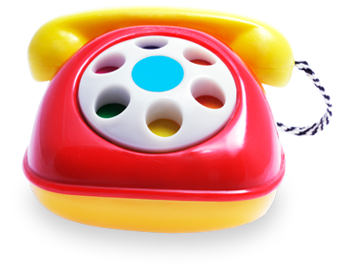The good news is that VUR doesn’t present immediate problems and may improve or resolve as your child gets older. But without treatment, it could allow a urinary tract infection (UTI) in the bladder to move upward and progress into a kidney infection. Repeated kidney infections can cause kidney damage. Our pediatric urology providers will recommend a treatment plan that starts with monitoring the bladder and kidneys and may include prescribing antibiotics to prevent UTIs. In severe cases, your child’s provider may recommend surgery to cure the VUR and avoid permanent damage to the kidneys. About 10% of children develop high blood pressure (hypertension), and 1% may develop kidney failure.
Vesicoureteral Reflux
or call
919-684-6994Hearing that your child may have vesicoureteral reflux (VUR) can be frightening. It’s a complicated name for when urine flows in the wrong direction. Normally urine flows from the kidneys, down to the ureters, and into the bladder in a one-way fashion. In children with vesicoureteral reflux, the urine can go backward from the bladder, up the ureters, and toward the kidneys. VUR is usually a birth defect that is most often found in children aged two and younger, although it can occur in children of all ages. VUR can occur in one or both kidneys.
At Duke, our pediatric urology team takes a step-by-step approach to make sure your child gets the right treatment with the least long-term impact.
Why Treatment for Vesicoureteral Reflux Is Important
Duke Health offers locations throughout the Triangle. Find one near you.
Diagnosing VUR
VUR is often found when a child has swelling of a kidney (hydronephrosis) due to the backward flow of urine and/or a severe UTI. UTIs are often separated into bladder infections (no fever) or kidney infections (associated with fever). About a third of children with a UTI that is accompanied by a high fever are found to have VUR.
A doctor may also suspect VUR if your child has:
- Bladder control problems, including those caused by brain, spinal cord, or nerve problems
- Bladder exstrophy
- Hydronephrosis or hydroureter (swelling of the kidneys or tubes that carry urine from the kidneys to the bladder))
- Posterior urethral valves (abnormal tissue in the male urethra that blocks the flow of urine from the bladder through the tube in the penis)
- Prune belly syndrome (a rare disorder in which a child’s urinary tract may not form properly)
- Spina bifida
To determine whether your child has VUR, your provider may recommend:
Ultrasound
High-frequency sound waves create images of your child’s bladder, ureters, and kidneys. This allows the provider to look for any abnormalities.
Voiding Cystourethrogram (VCUG)
This specialized X-ray allows providers to see what happens when your child's bladder is filled with X-ray dye. If VUR is present, the dye will be seen going backward from the bladder up the ureters and into the kidneys. How much goes upwards gives a "grade" to the reflux and helps determine severity. It’s typically the only way to fully diagnose VUR and helps determine the best treatment for each individual.
Nuclear Medicine Scan
In severe cases, a nuclear medicine study may be ordered to determine how much damage or scarring has occurred in the kidneys due to VUR. A special radiotracer is injected into the bloodstream, and about 90 minutes later, the child lays on a bed over a scanner to image the kidneys.

Why Choose Duke
Individualized Treatment
Your child’s VUR treatment plan will be tailored to their specific needs with particular attention to short-term and long-term health and safety.
Specialists in Caring for Young Patients
Our pediatric urology team -- including our nurses, surgeons, anesthesiologists, and pharmacists -- are specially trained in caring for children. We consider the whole child, including their stage of physical, emotional, social, and intellectual development.
Advancing Research in VUR Treatment
Duke pediatric urologists are also researchers committed to staying on the cutting edge of the diagnosis and treatment of VUR. We participate in ongoing, government-funded research to improve the management of VUR.
Recognized for Quality Care
Our pediatric urology providers are part of Duke Children’s, which is certified as a Level I Verified Children’s Surgery Center by the American College of Surgeons. This is the highest level of distinction for hospitals that perform complex surgical procedures for newborns, children, and teens.
Family Support Services
Our Child and Adolescent Life team will work with your family to make your child’s experience with procedures and treatments as comfortable as possible.
